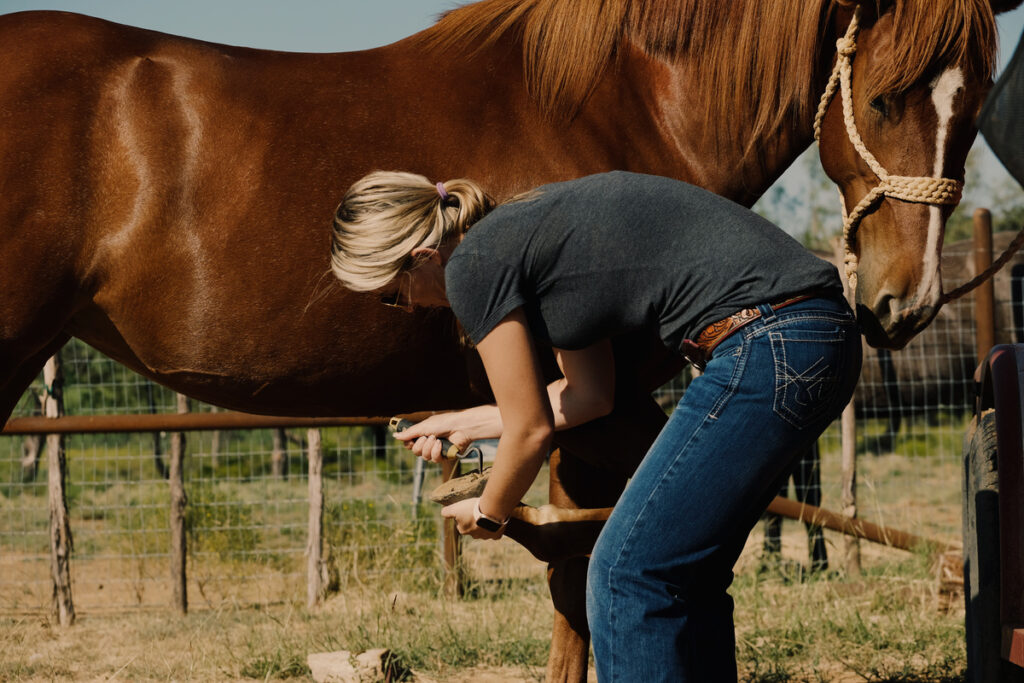
As horse owners and caretakers, we understand the vital role that hoof health plays in our equine friends’ overall well-being. During dry weather conditions, the horse’s hooves are particularly susceptible to various challenges, including dehydration, cracking, and brittleness. To ensure your horse’s hooves remain strong, resilient, and healthy, it’s crucial to implement proper care and preventive measures. In this blog post, we will explore some valuable tips and techniques for caring for horses’ hooves in dry weather conditions.
1. Hydration is Key:
Just as we humans require hydration during dry weather, so do our horses. Ensure your horse has access to a clean, fresh water supply at all times. Sufficient water intake helps keep the hooves hydrated and promotes overall hoof health.
2. Adequate Moisturizing:
Some suggest you should incorporate regular hoof soaking to provide much-needed moisture to dry hooves. This can be done by placing the hooves in a shallow bucket of water or using dampened towels wrapped around the hooves for a designated period, but others suggest this can cause more harm than good if horses hooves go from dry to wet to dry again because it can cause hooves to dry even more. Try to avoid sudden changes. The biggest issues mainly arise when your horse goes back and forth between moist and dry conditions. This can happen if your horse is out overnight in dewy conditions in the pasture, followed by dry conditions during the day. If possible, try not to allow your horse’s hooves to become soaked, and then quickly dried from any climate changes. It is best to apply a good moisturizing hoof dressing or sealant to maintain moisture in the hoof. Hoof packing can also help.
3. Maintain a Clean Environment:
Maintaining a clean and dry environment is crucial for hoof health. Regularly remove manure and debris from the horse’s living area to prevent bacterial and fungal growth, which can lead to infections. Additionally, provide a dry and well-drained turnout area to minimize exposure to muddy or excessively wet conditions that can soften the hooves.
4. Proper Trimming and Farrier Care:
Regular hoof trimming and farrier visits are essential, especially during dry weather conditions. Consult with a professional farrier to establish an appropriate trimming schedule that suits your horse’s specific needs. Trimming helps maintain the balance of the hooves, prevents excessive growth, and reduces the risk of cracks or chips.
5. Protective Measures:
Consider using hoof boots or applying hoof sealants during dry weather conditions, particularly when riding or working on abrasive surfaces. Hoof boots offer additional protection and support, reducing the risk of excessive wear and tear on the hooves. Hoof sealants act as a barrier against excessive moisture loss and help maintain optimal hoof hydration.
6. Balanced Diet and Supplements:
A balanced diet plays a vital role in hoof health. Ensure your horse’s diet consists of high-quality forage, supplemented with appropriate levels of vitamins, minerals, and fatty acids, such as biotin and omega-3. Consult with an equine nutritionist or veterinarian to determine the best diet and supplements for your horse’s individual needs.
Conclusion:
Caring for your horse’s hooves in dry weather conditions requires diligence and proactive measures. By implementing proper hydration, applying a good hoof dressing or sealant or hoof packing if needed, cleanliness, trimming, and protective measures, you can significantly reduce the risk of hoof-related issues and maintain optimal hoof health. Remember, every horse is unique, so consult with professionals for personalized guidance to ensure the best care for your equine companion. By prioritizing hoof care, you’ll provide your horse with a solid foundation for a healthy and happy life.


Recent Comments